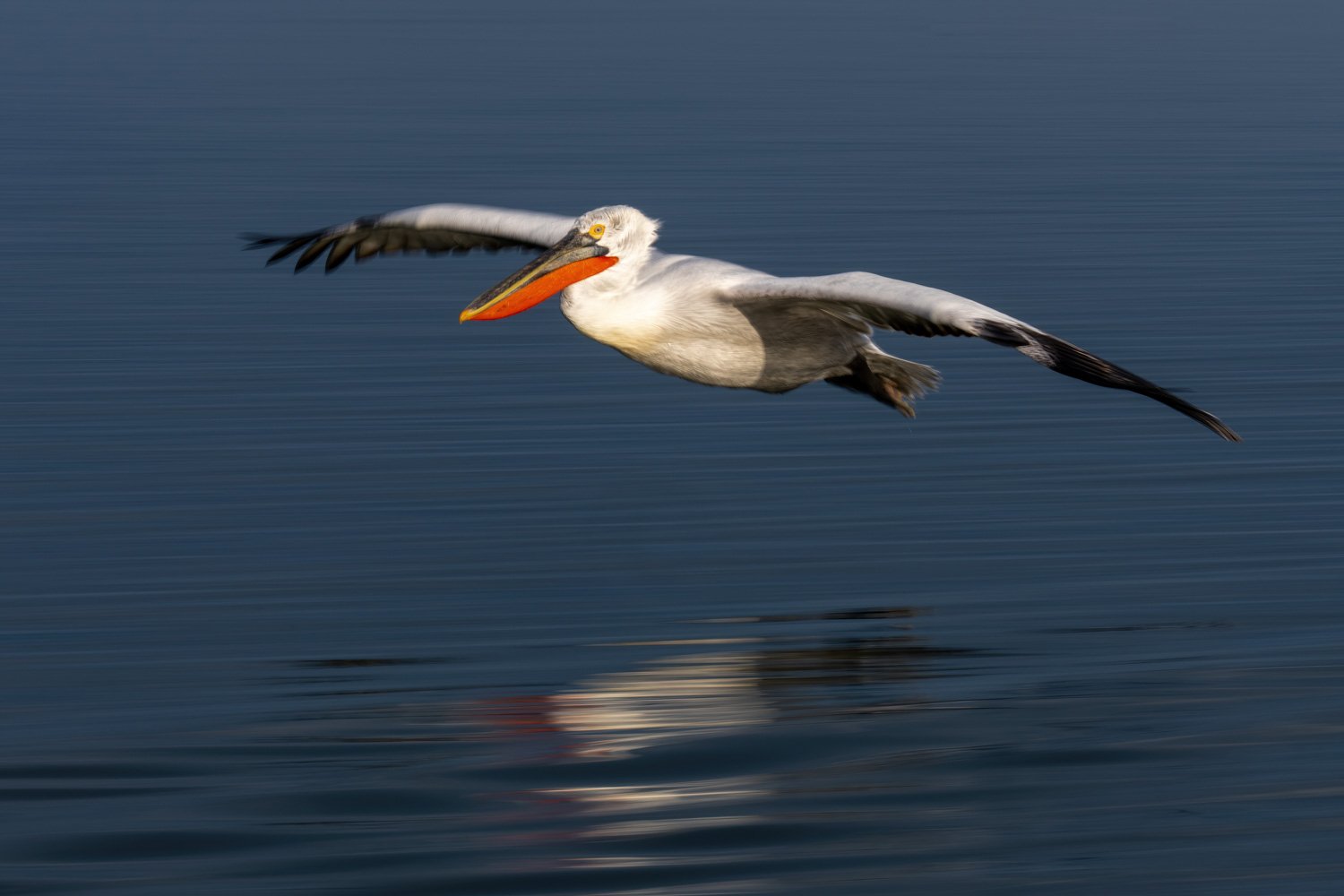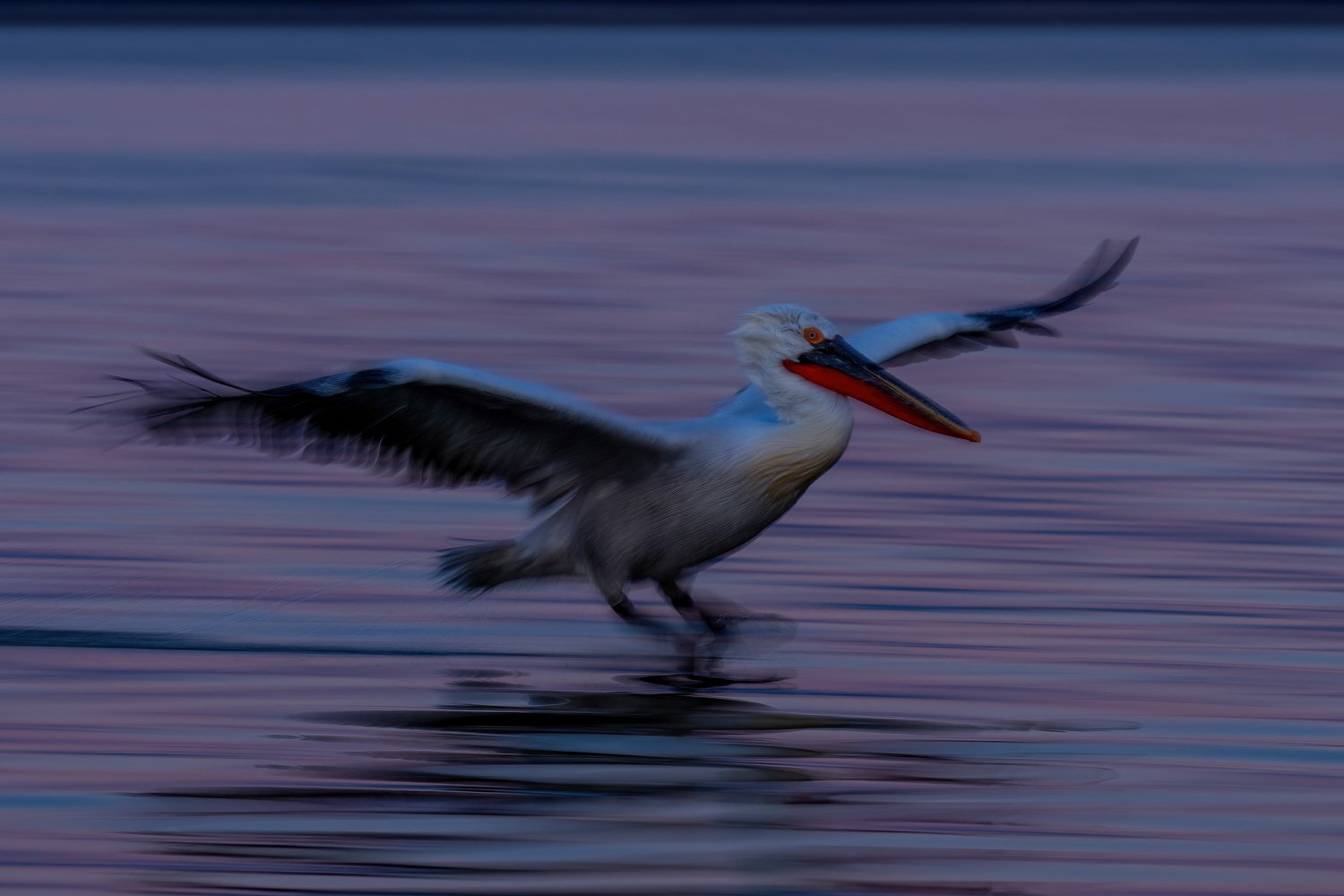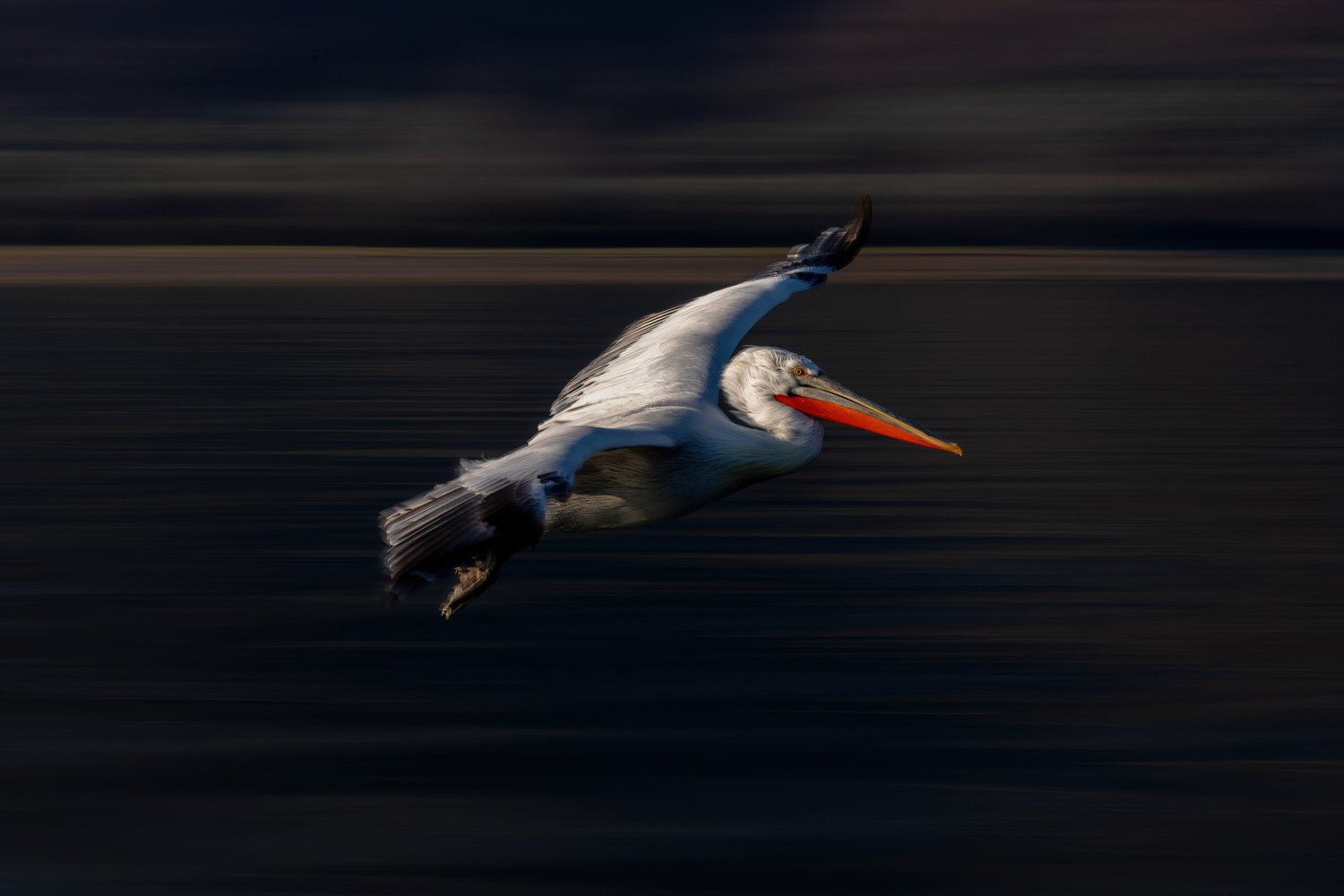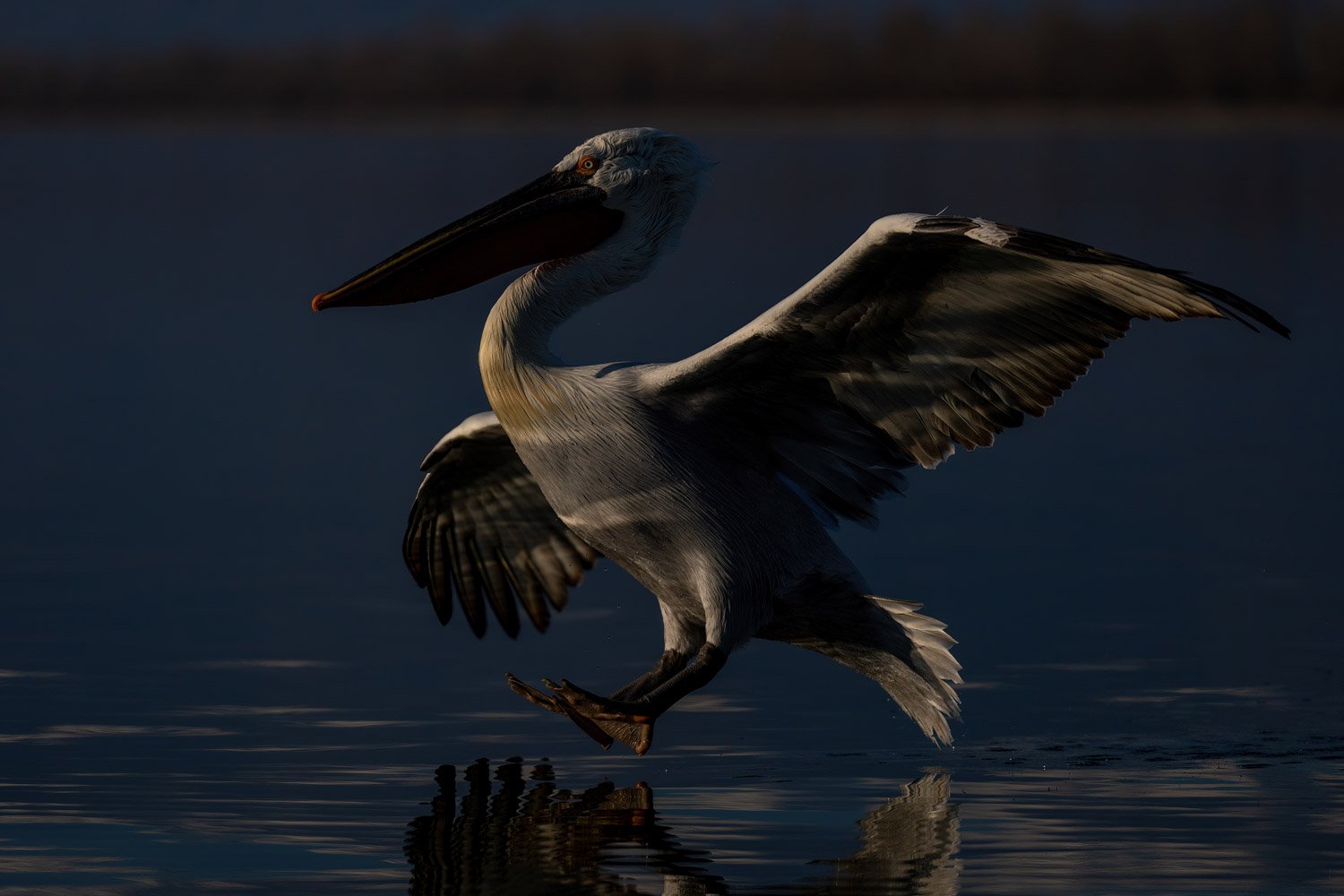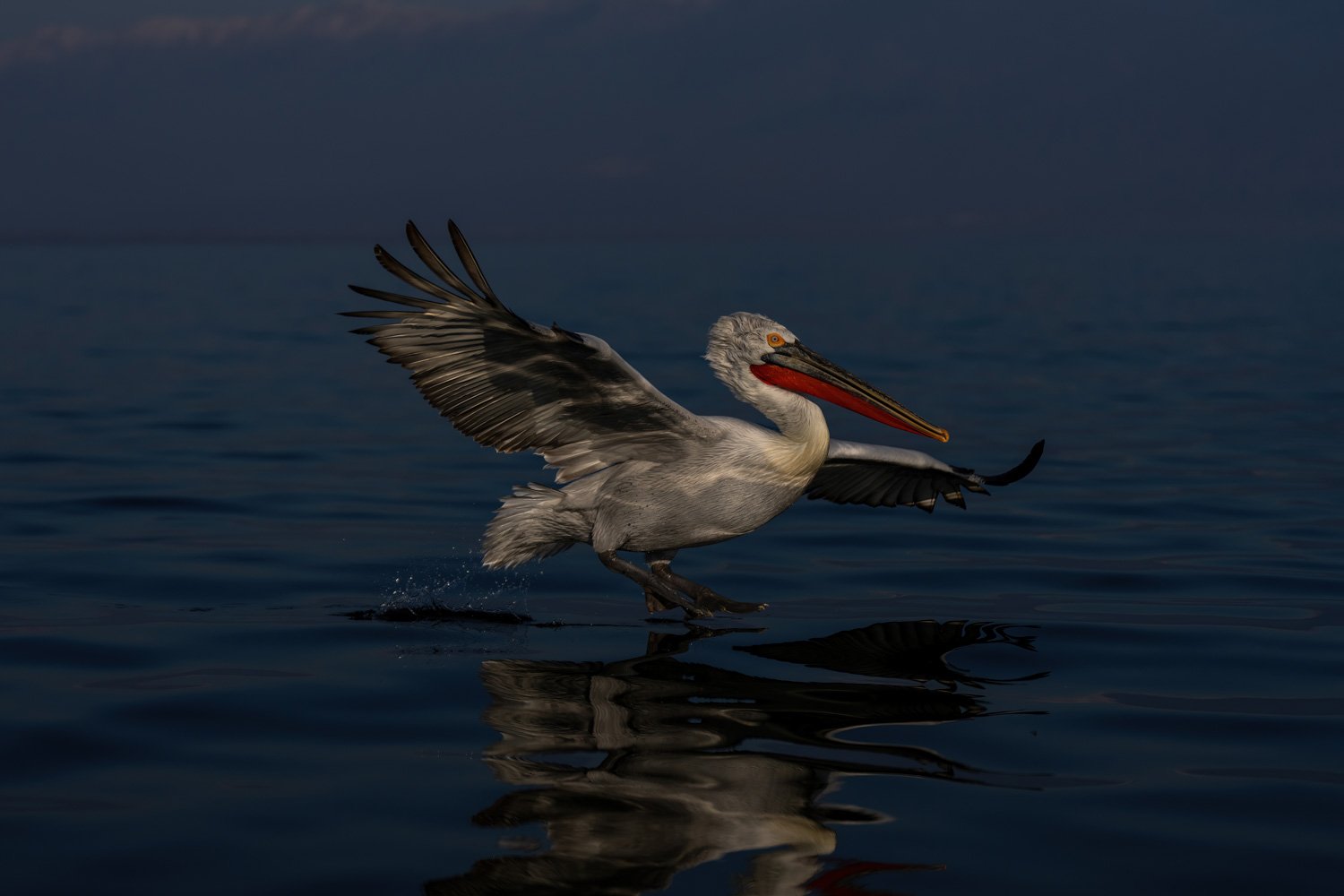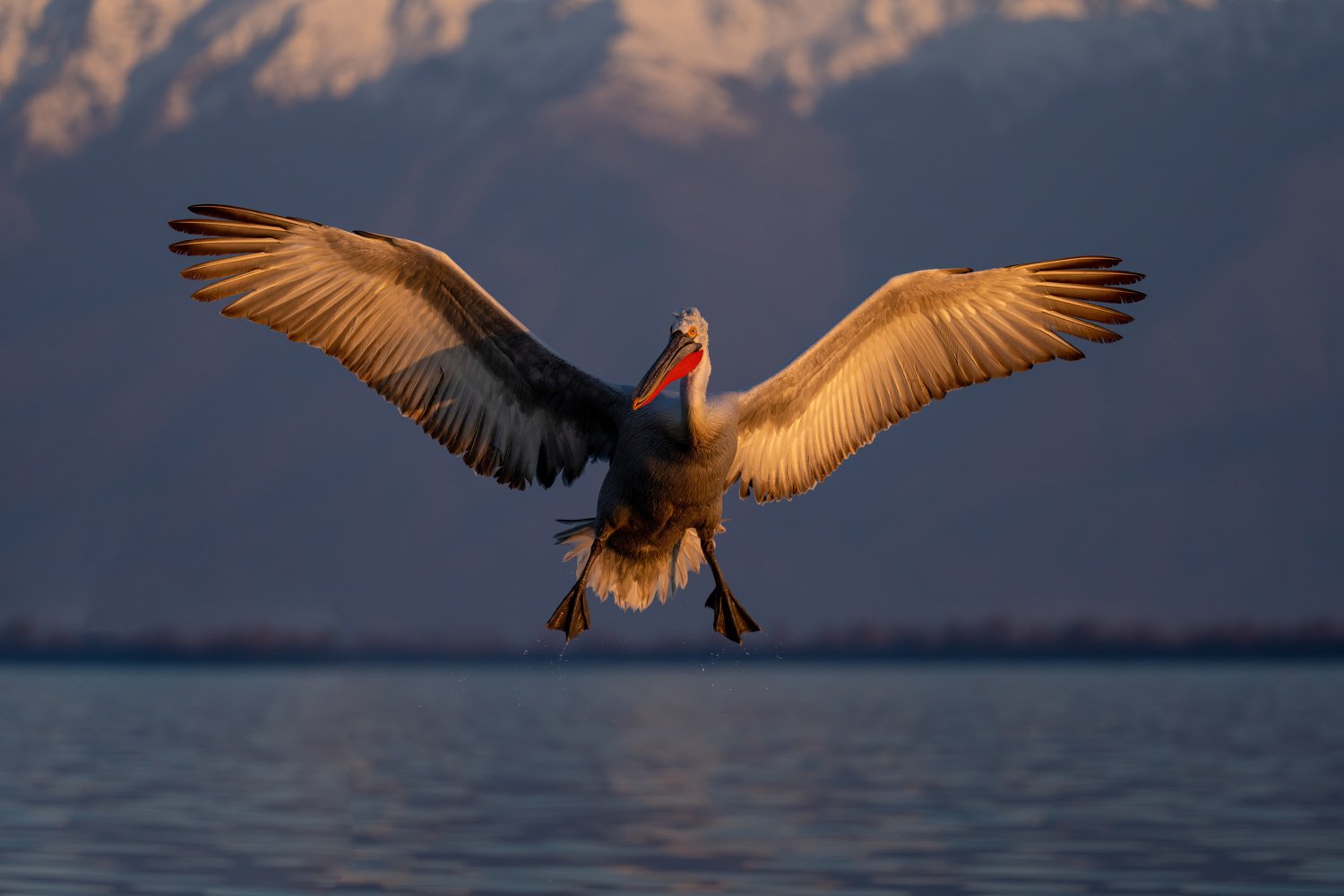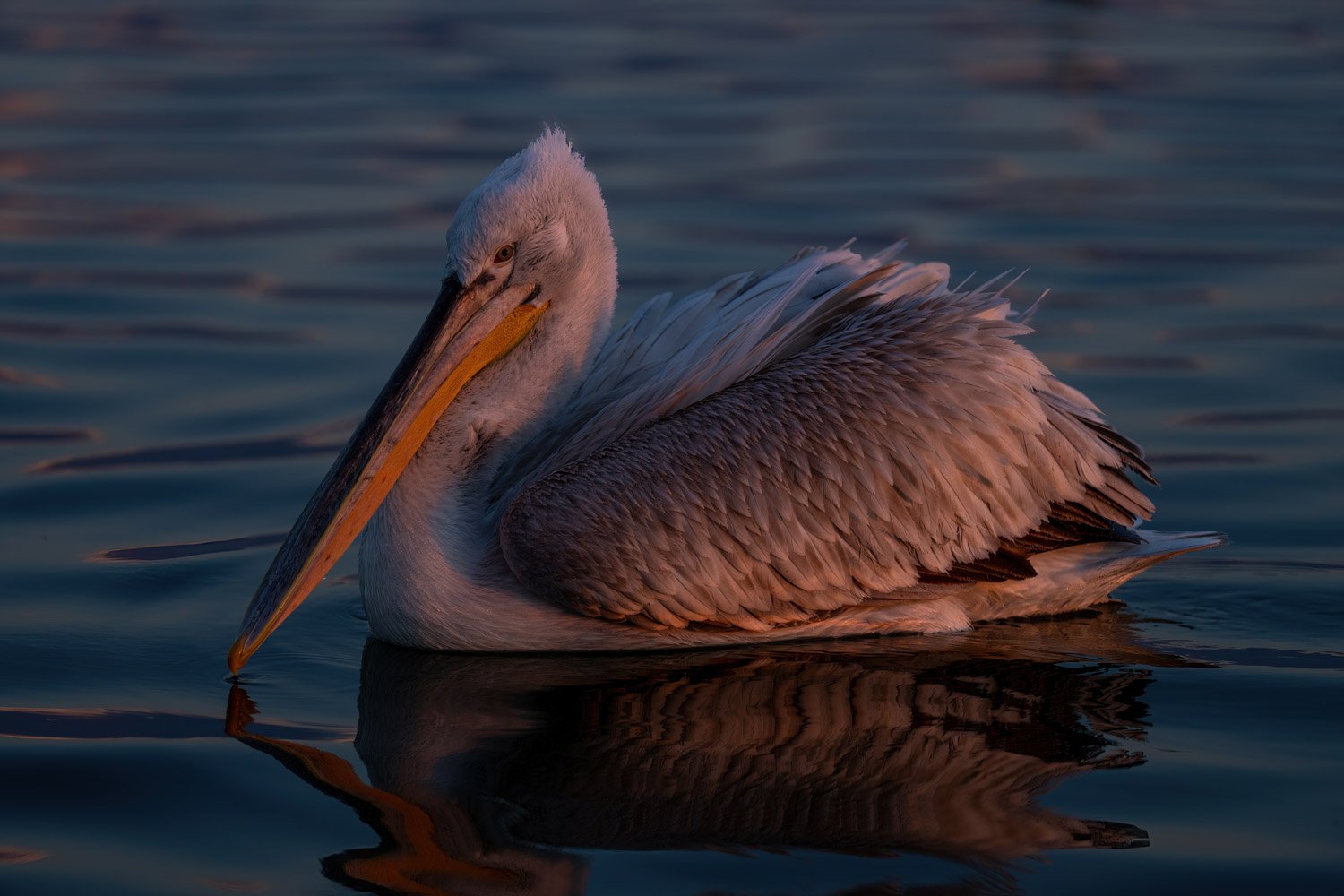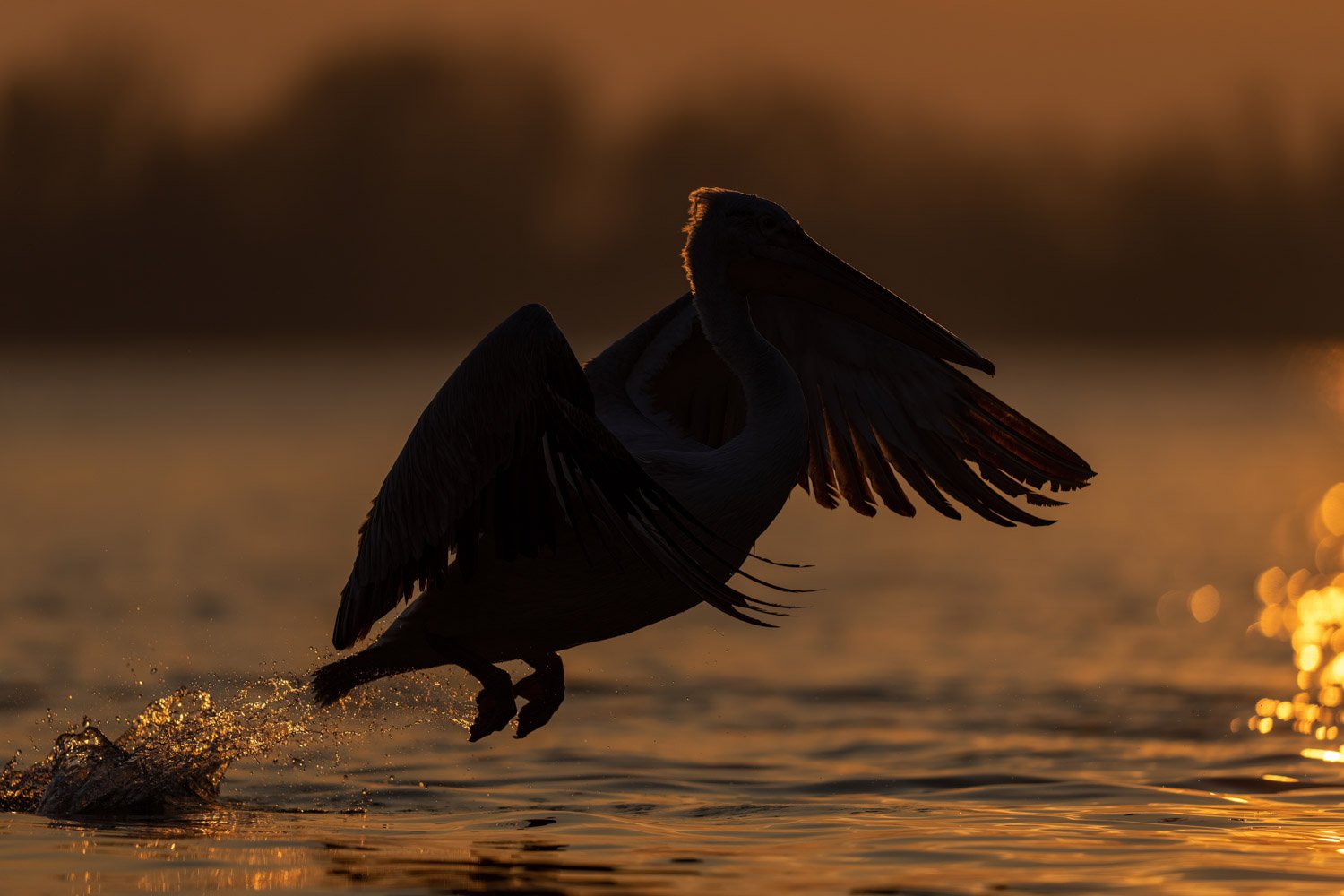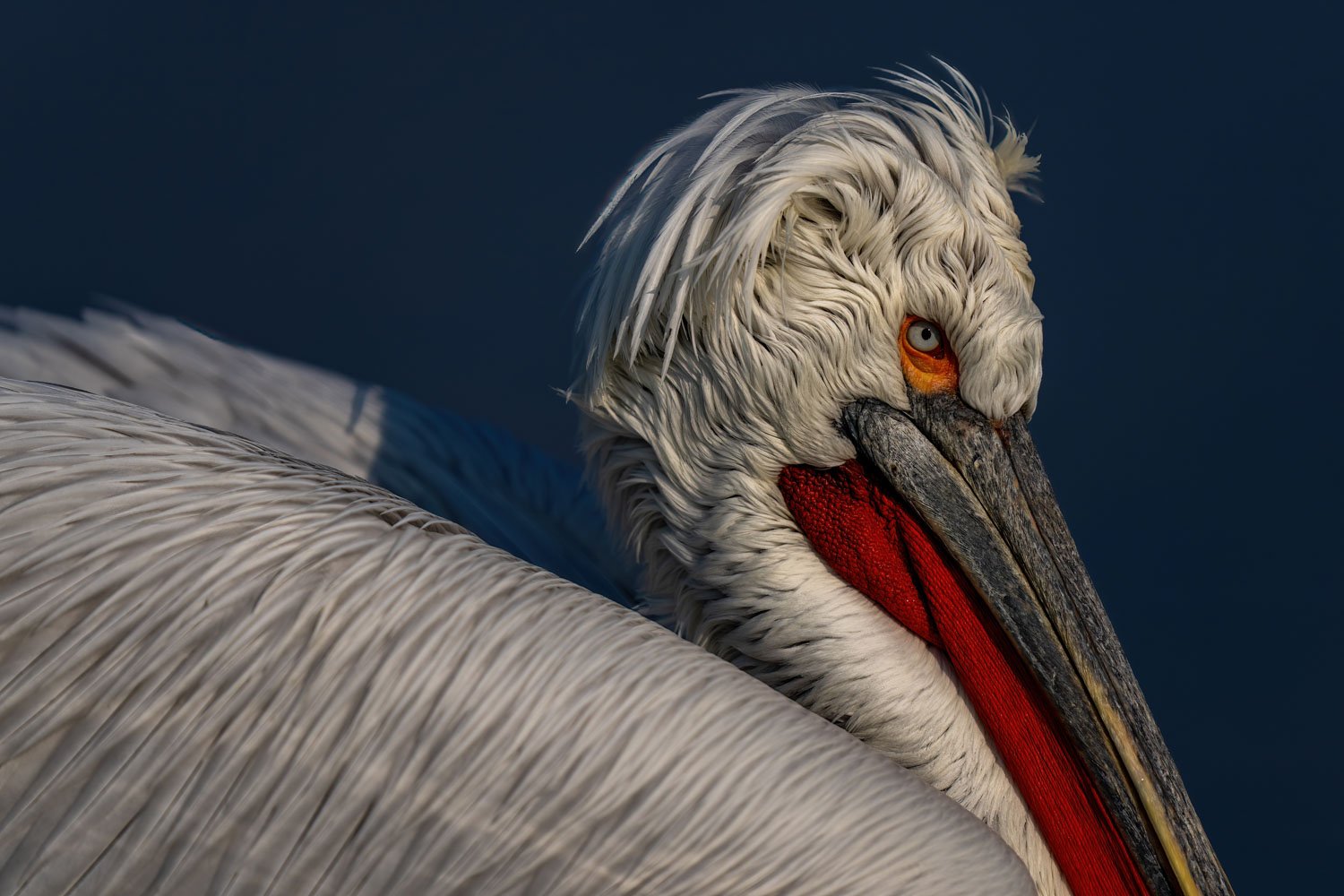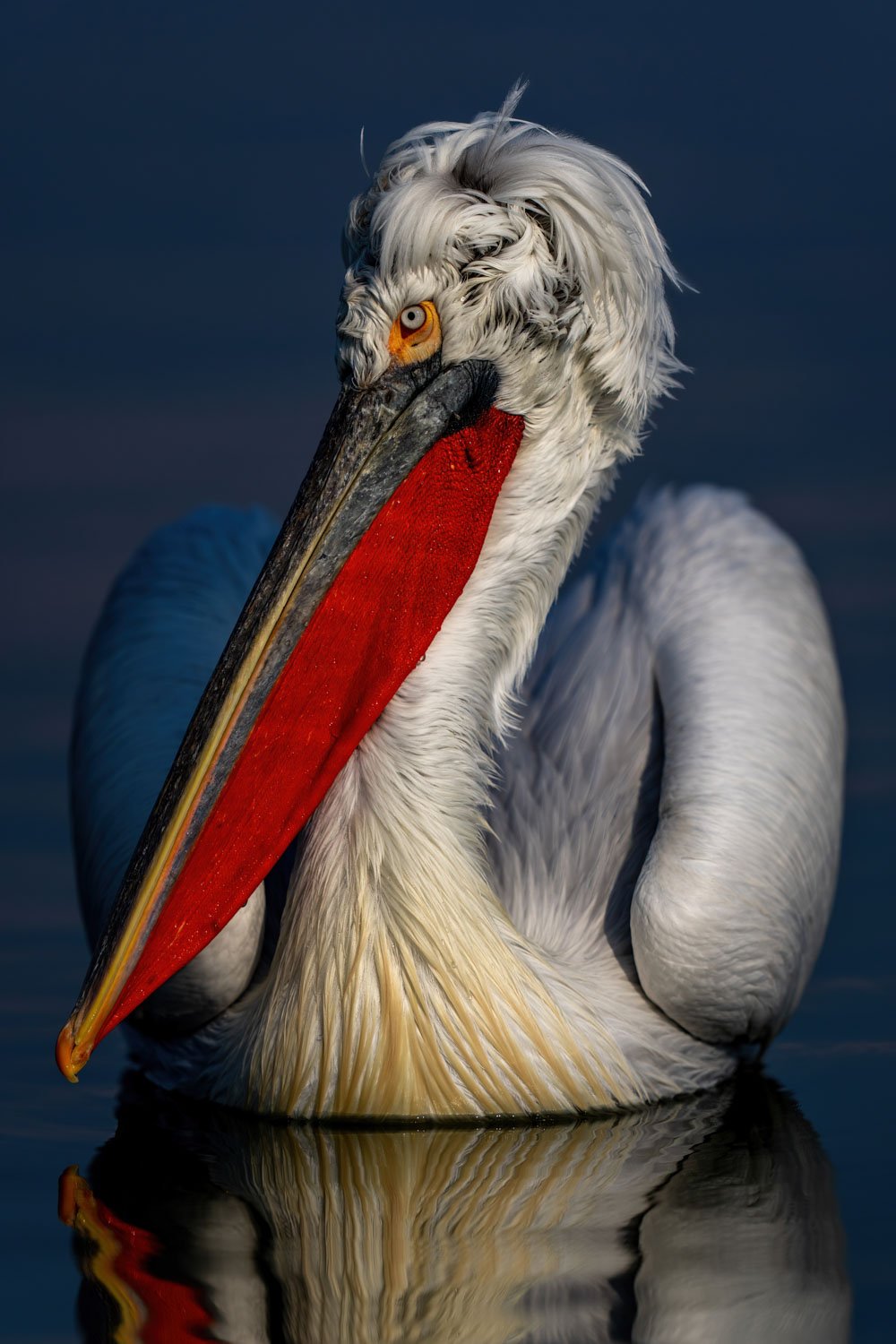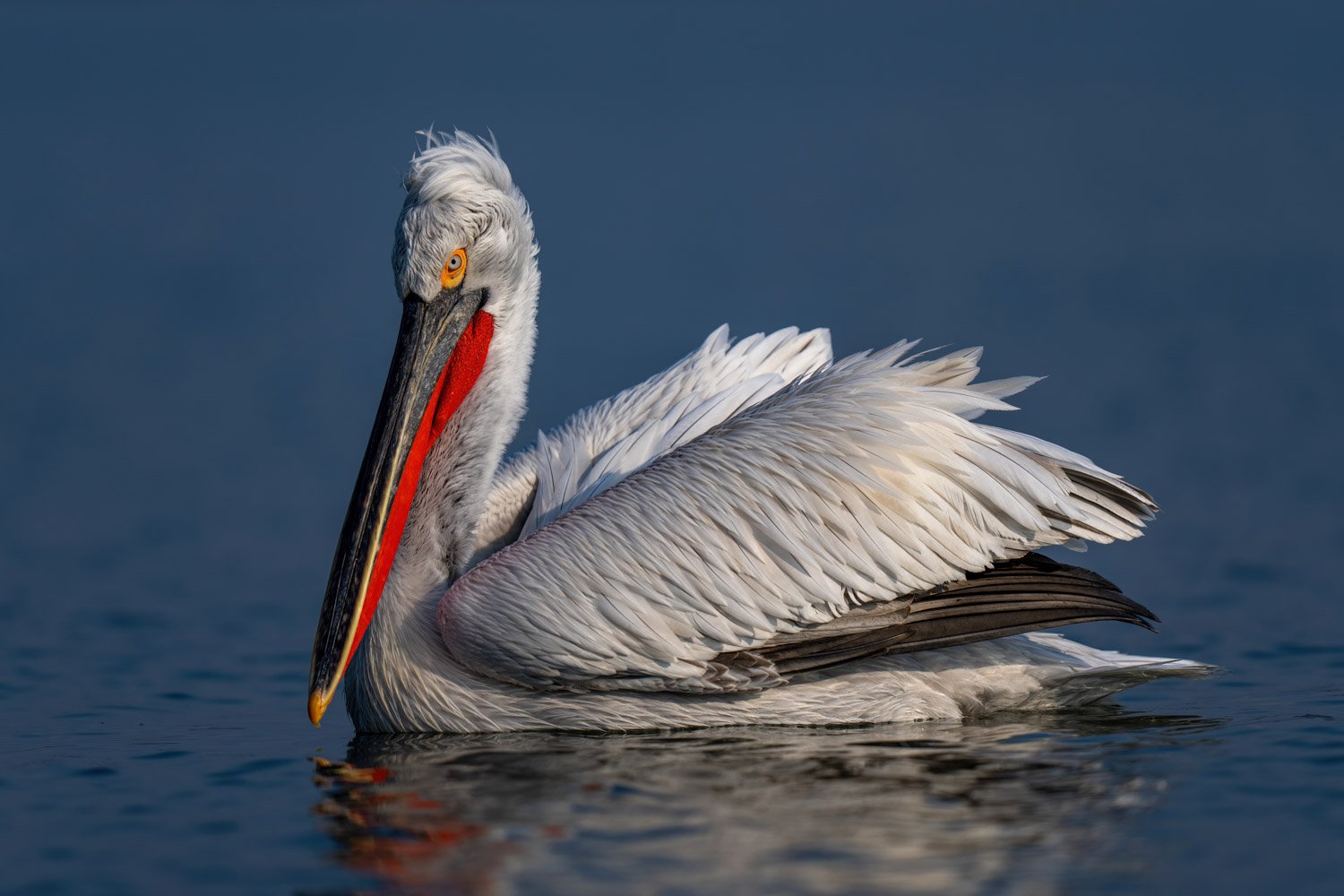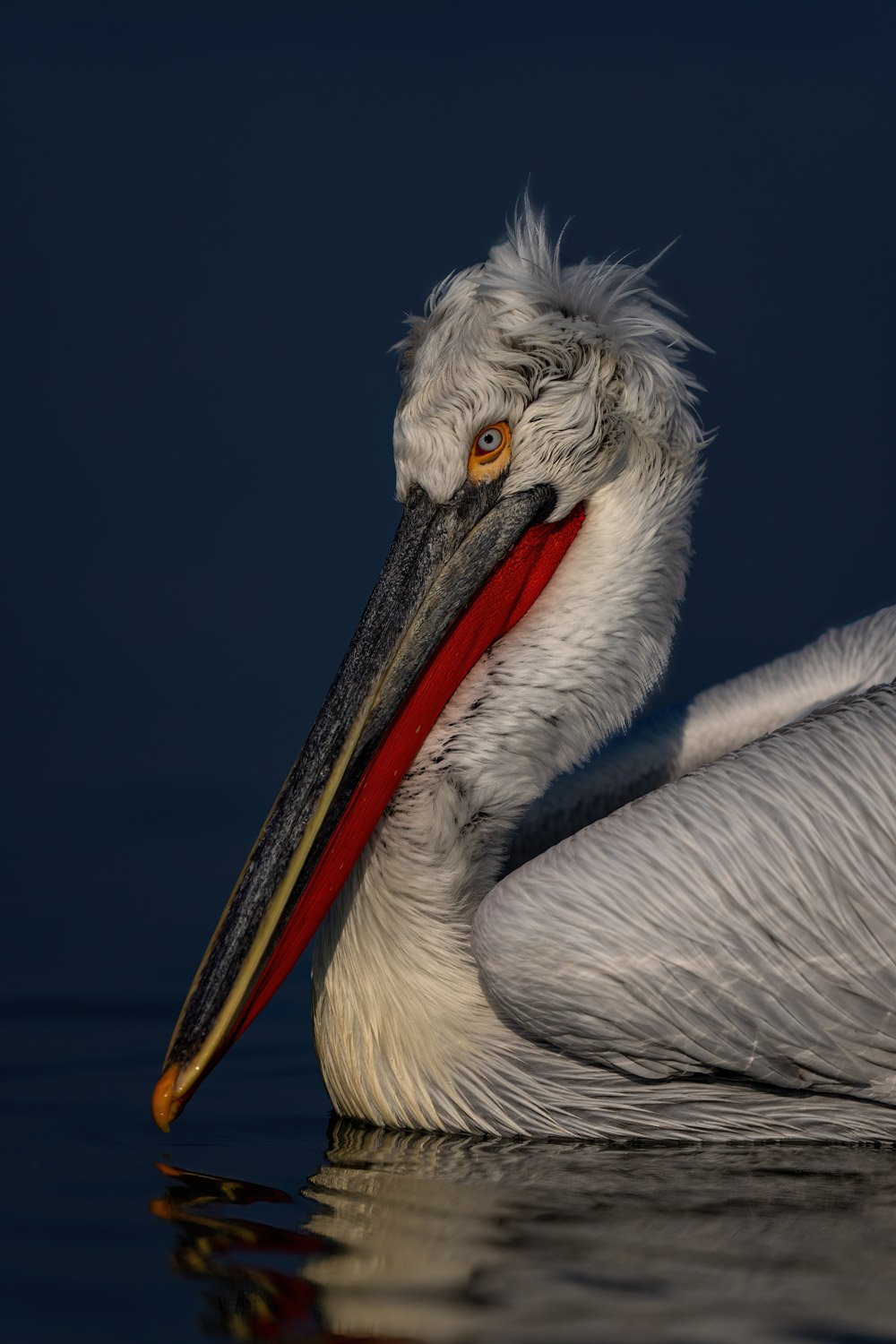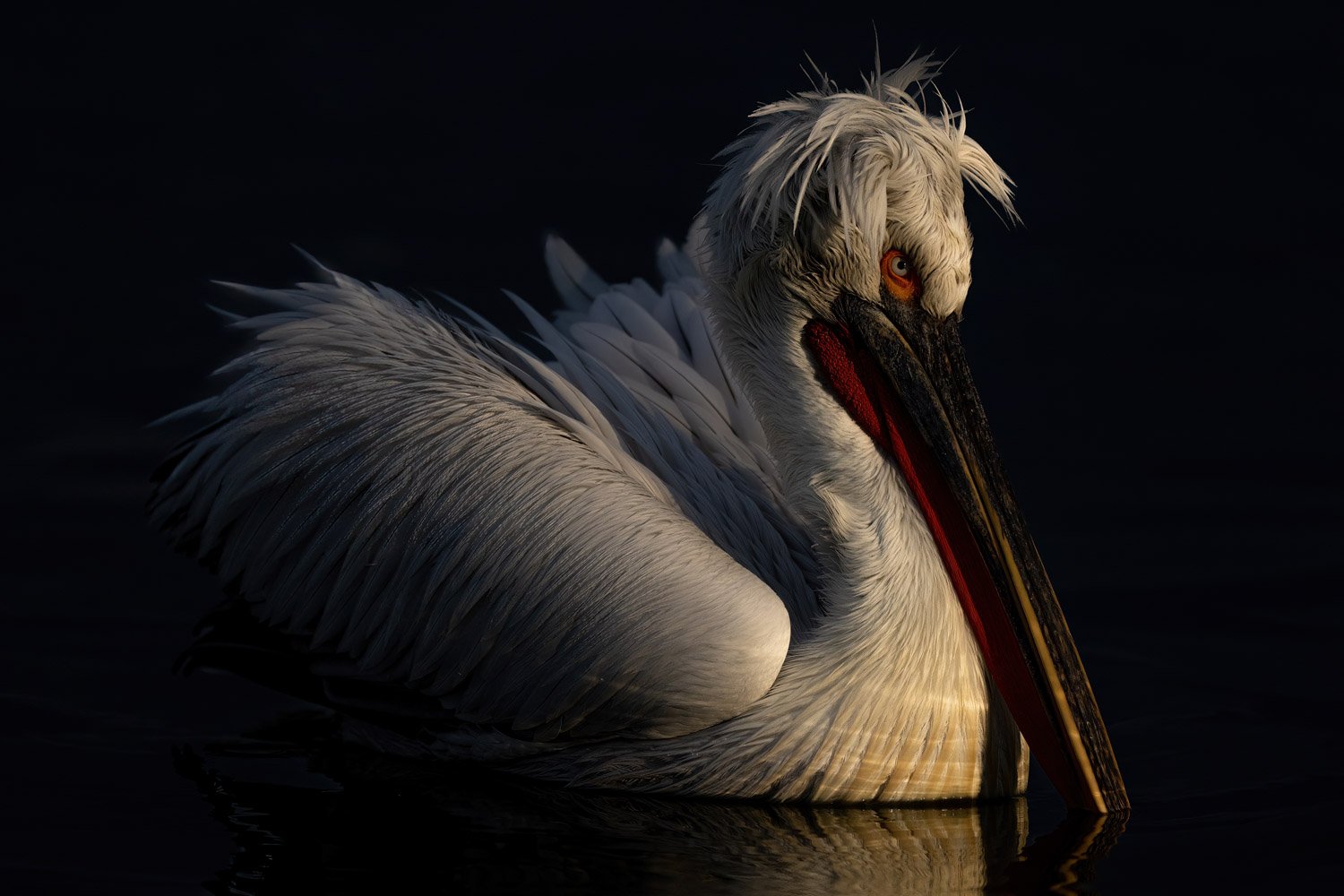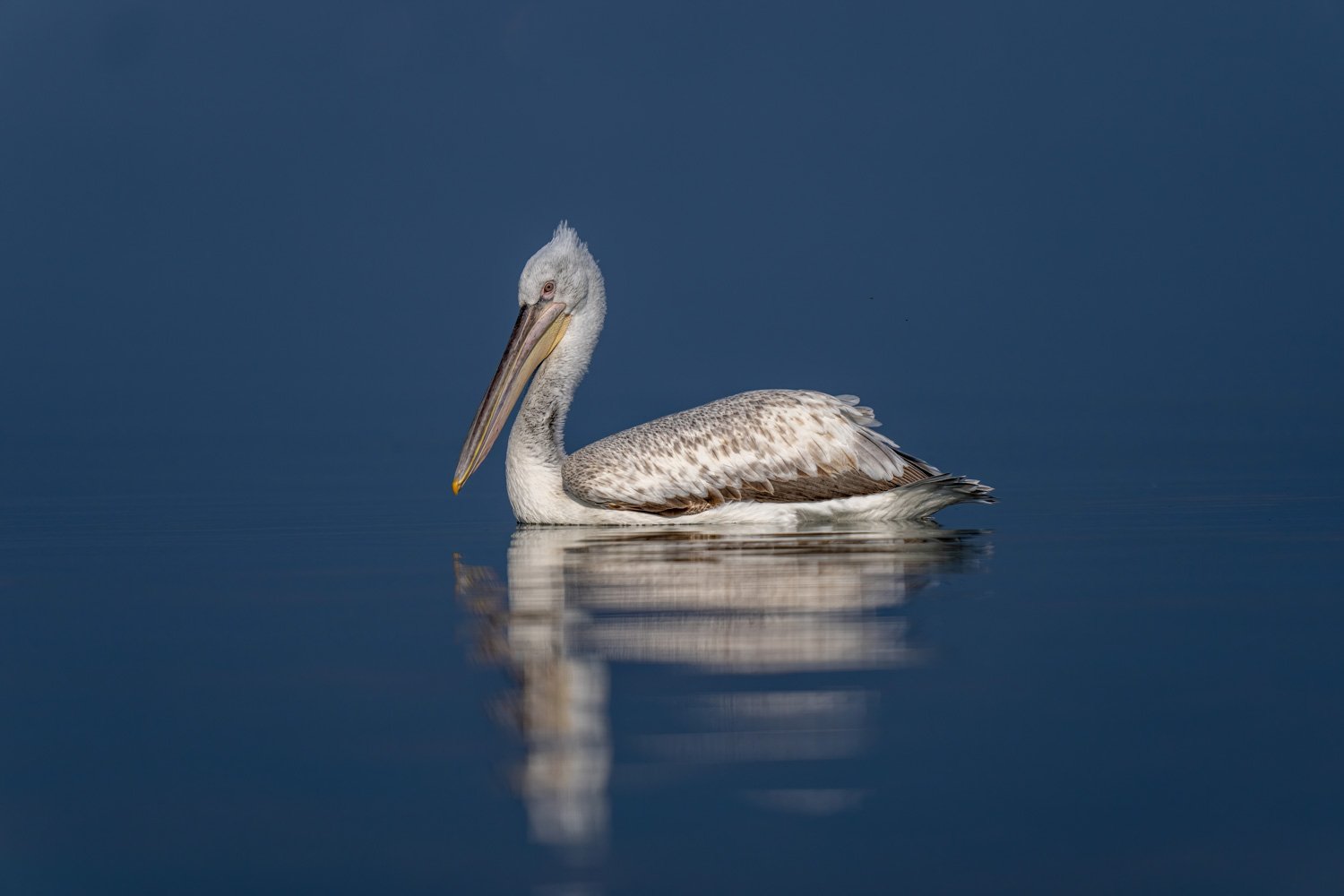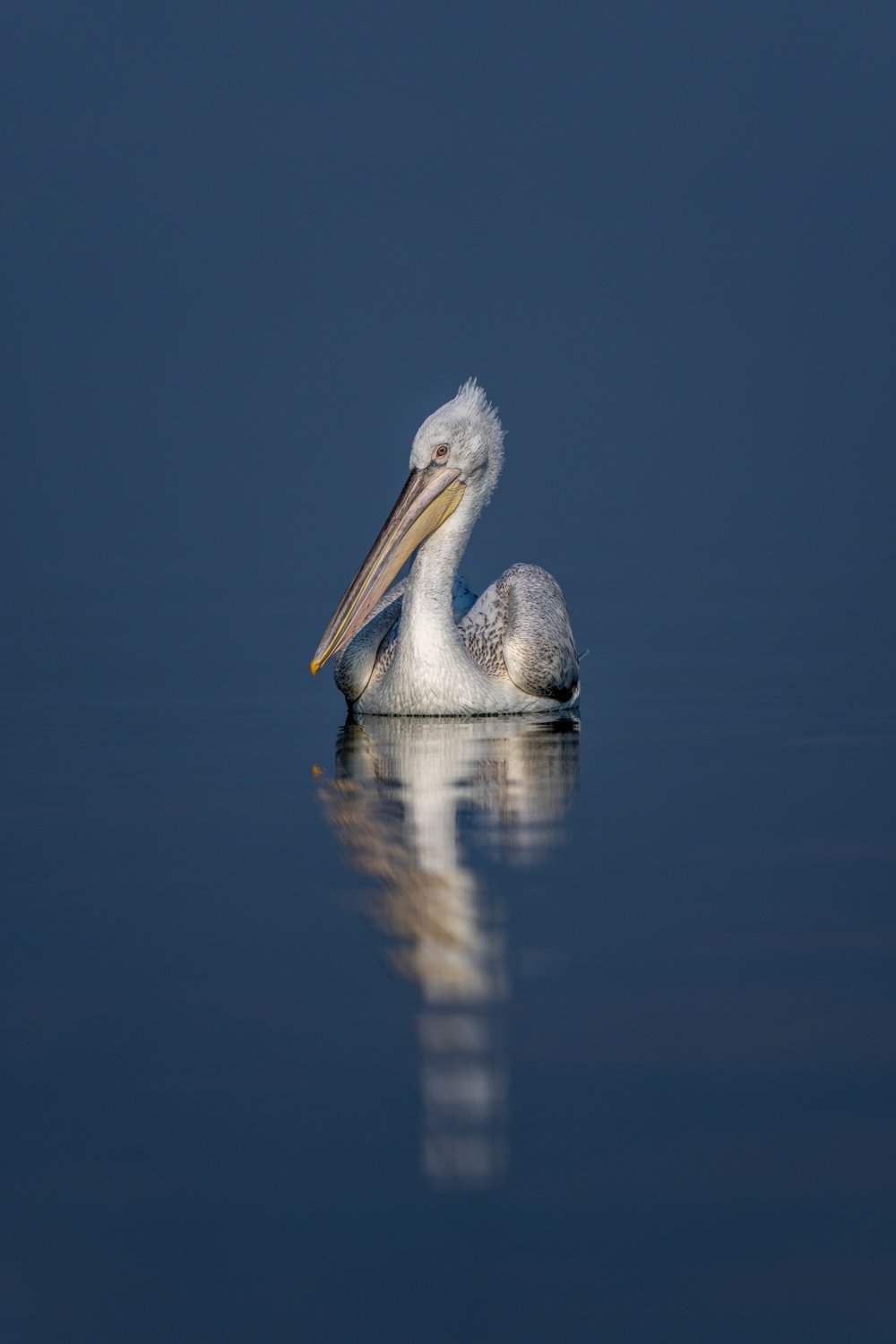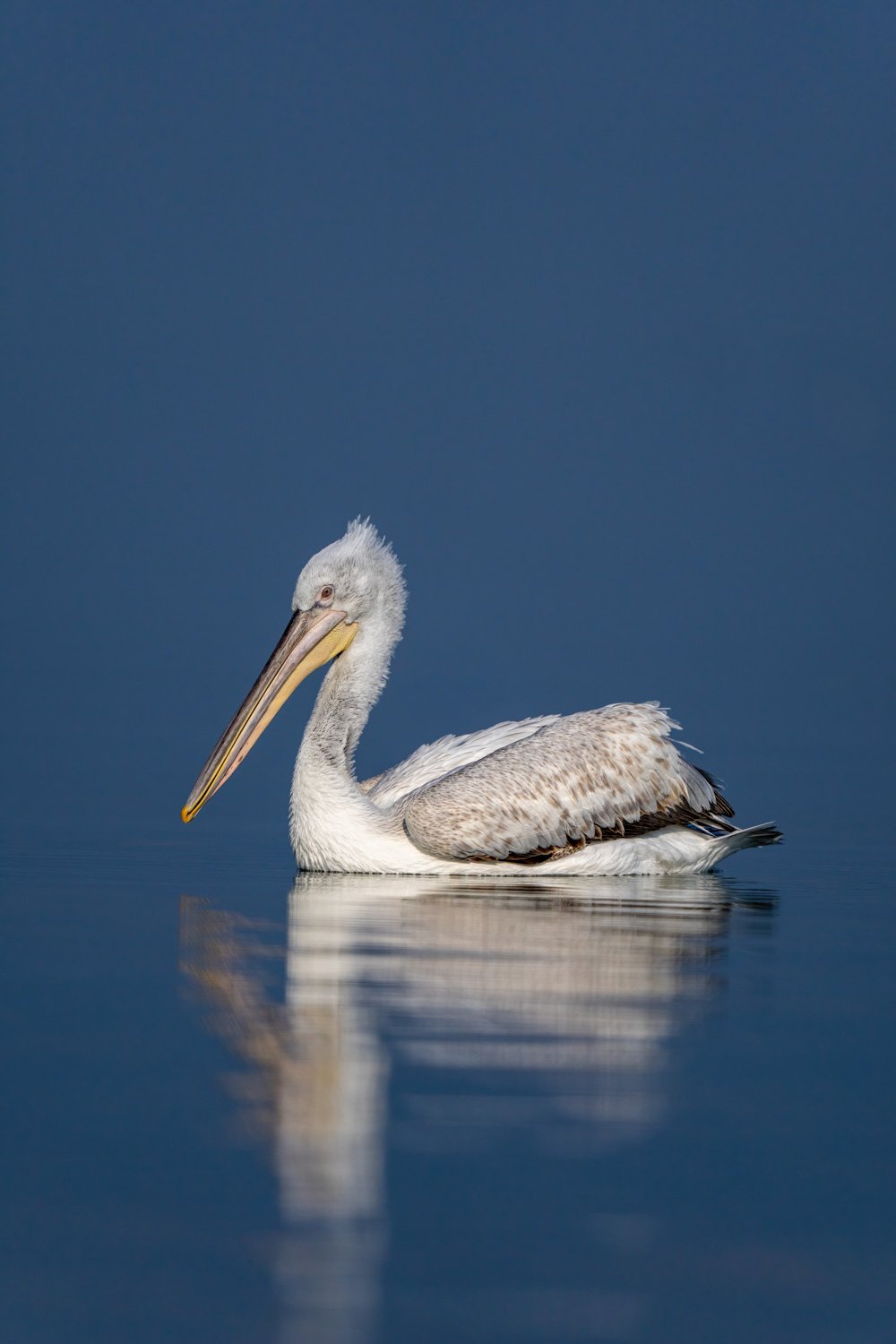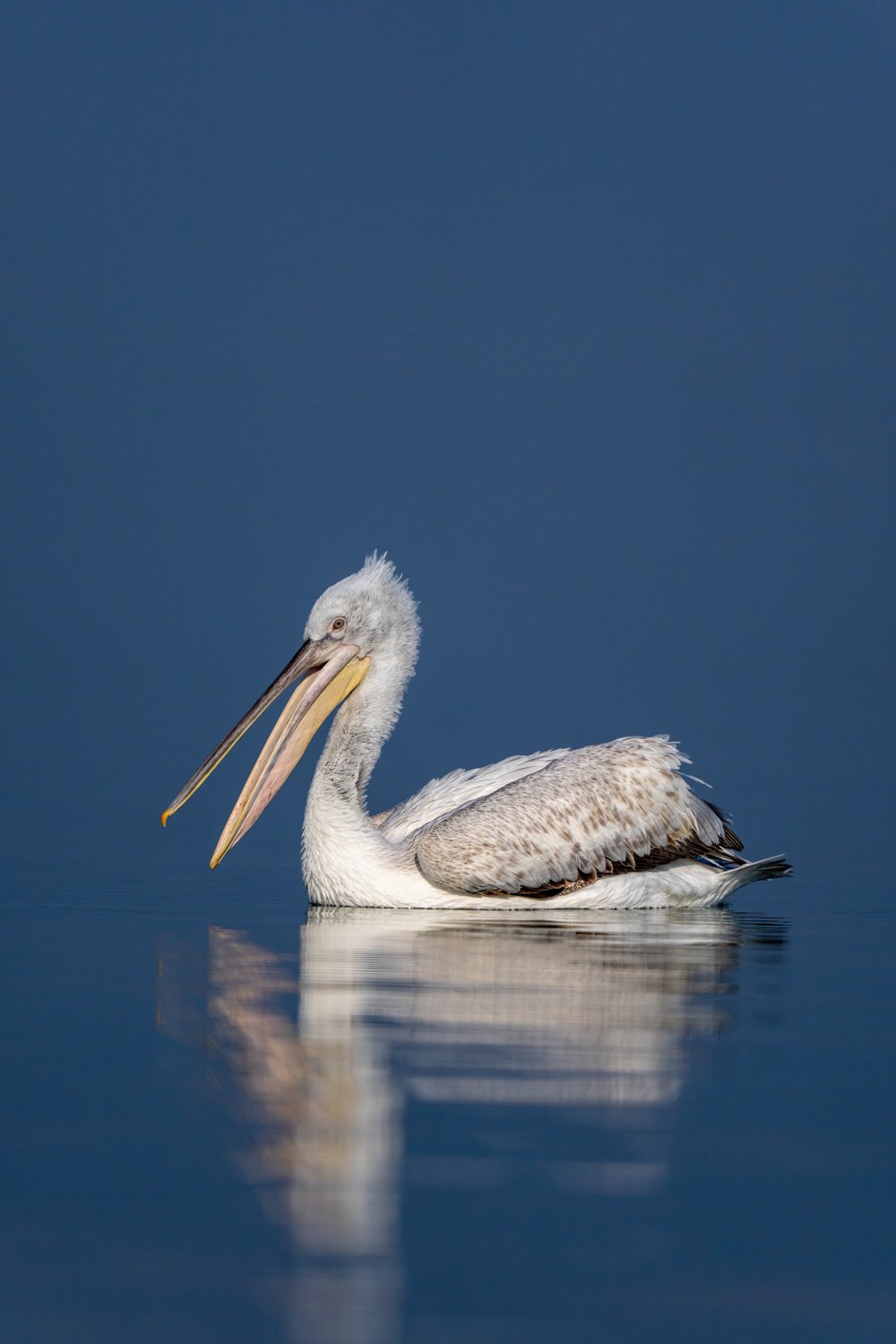Lake Kerkini
“A wonderful bird is the pelican. His beak can hold more than his belly can.”
The Blue Line
I’ve just come back from a five-day visit to Lake Kerkini in Greece to photograph the Dalmatian pelicans (plus a few great white pelecans and flamingos). I usually prefer the Big Five to birds, so it wasn’t my normal sort of trip, but it was good fun, and I was happy with my pictures—and that’s the main thing!
The trip was led by a friend called Tammy, who had visited Kerkini in 2022, and there were six of us in total. We were mostly guys in our fifties, but one was 10 years younger and one 20 years older. He had a few mobility issues, so we had to help him out a bit.
We travelled together on an easyJet flight to Thessaloniki, and then Tammy hired a Mercedes van to drive to the Limneo Guest House near the lake. There, we met our host, Nikos, who looked after us most of the time. He spoke good English and had a decent sense of humour, so we had a few laughs.
We spent a few hours a day photographing the local pelicans, either from the shoreline or a motorboat out on the water. Nikos or the other boat driver attracted the birds by throwing fish in the water or up in the air, so we always had a couple of dozen following us around.
We had breakfast and (sometimes!) lunch at the hotel, but we went out for dinner in the evenings at a few local restaurants. There was also a supermarket across the road, so a few people walked over there to get drinks and snacks.
One of the guys had kindly brought a bottle of Four Oaks Laphroaig single malt whisky, so we usually ended up drinking in the kitchen late at night…!
The rest of this article will start by looking at the Dalmatian pelican in a bit more detail and then cover all the different types of shots I took.
Dalmatian Pelicans
Side-by-Side
The Dalmatian pelican or Pelecanus crispus is 5’ 3” to 6’ 0” (160-183 cm) long with a wingspan of 8’ 0” to 11’ 6” (2.45-3.51 m) and weighs 16.0-33.1 lbs (7.25-15 kg). That makes it the largest species of pelican and possibly the largest freshwater bird. It might even be the largest flying bird—although male bustards and swans might not agree with that!
Male Dalmatian pelicans are larger than females, but they all have white plumage with orange eyes. The lower bills of mature adults are bright red, but those of juveniles are yellow or orange. In the winter, their white feathers turn a rather dull grey.
You can find Dalmatian pelicans right across the Eurasian landmass, from the Mediterranean to the Taiwan Strait, but habitat loss has led to their numbers dwindling in the 20th Century. A recent bout of avian flu decimated the population at Lake Kerkini, and it’s only just starting to recover.
Pelicans feed almost exclusively on fish, and they eat around 2.6 lbs (1.2 kg) a day. Their preferred species include common carp, European perch, common rudd, eels, catfish, northern pike and mullet. Greek pelicans particularly like something called the ‘Prespa bleak’.
Action Shots
I took plenty of portraits, but the main event was the chance to take pictures of the pelicans flying past our boat and then sliding to a stop on the water, using their feet as brakes.
Slow Pans
Bird Bank
I took over 70,000 pictures on my trip! That’s an awful lot, I suppose, but it was mostly because I was trying a lot of slow pans—which are quite tricky. If you’re a regular reader of this blog, you’ll know my fondness for this type of shot, and you can read all about it here. My main problem on this trip was that the sun was so bright I was often in danger of clipping my whites—even at 50 ISO!
The basic idea is to show a sense of energy or motion by ‘streaking’ the background and blurring the bird’s wings while keeping the head sharp. All you have to do is to slow down your shutter speed to around 1/15th of a second and follow the birds in flight, taking a burst of photos at the maximum frame rate. However, it helps to have eye detection and tracking!
The photographs in this section are my personal favourites, but I also tried to encourage the other guests to have a go. I hope they learn to like the slow pan. It’s a great way to add a bit of originality to wildlife photos—either of birds or animals.
Birds in Flight
Golden Pelican
If it was too bright for slow pans, I dialed in a fast shutter speed and captured a few bird in flight shots—preferably with the snow-capped Kerkini mountains in the background!
Sunrise
Old Gold
On a couple of occasions, we went down to the beach to shoot the pelicans in the pre-dawn light and then at sunrise. I had one camera on a tripod with a 400mm prime and another lying next to me with a 70-200mm zoom. I used the prime for action shots of the birds in flight and the zoom for closer subjects, especially portraits of pelicans in the reflection of the rising sun on the water.
Portraits
The birds were so desperate for fish that they were usually close enough for portraits—either on the boat or on the beach. One day, a pelican even landed on the bow!
I took three main types of portraits:
Underexposure
Reflections
‘Endless blue’
Close-ups
Underexposure
Bow Bird
Underexposure was a good way to increase the saturation of the dawn colours—although I did Expose-To-The-Right (ETTR) on one occasion when it was so dark that I was worried about getting noise in the shadow areas.
The sunshine was always so bright that the main problem with this technique was forgetting to whack up the shutter speed—sometimes all the way to 1/32000th of a second! I was shooting in Manual with Auto ISO and one, two or three stops of negative exposure compensation. However, the Sony ⍺1 only tells you there’s too much light by making the ISO label in the EVF blink—and I kept forgetting. That meant some shots didn’t actually end up underexposed at all!
Reflections
Lying Low
We had perfect sunshine and generally calm conditions out on the water, so that meant a great opportunity to capture a few reflections. Someone even suggested focusing on the reflection rather than the bird, which was a good idea!
Beaky
Endless Blue
No Limits
By this, I mean taking shots when the horizon disappeared and the sea and sky (or mountainside) blended into one continuous shade of blue. It gave the shots a gorgeous simplicity and minimalism.
Close-ups
Better Half
One of the good things about photographing a single species is that you get bored. What I mean is that you’re forced to think about different ways to take shots. One of the things I made sure to do was to photograph details and close-ups. You don’t always have to show the eye if it’s obvious what you’re shooting from the beak or the plumage.
Feeding
Feeding Frenzy
All the pelicans were used to being fed, so they knew what was coming. As soon as they saw us in the morning, they’d paddle up to us expectantly—and they weren’t disappointed! We got through a whole bucket of fish every boat ride, and there were only a couple of dozen pelicans. That gave most of them a healthy ‘profit’—although the juveniles were pushier, so they got most of the spoils!
Sadly, competitions don’t like feeding or baiting (and pelicans catching fish in mid-air is hardly ‘natural’!), so these shots will never win any major awards. However, they were still fun to take…
Fish Food
Video
Tammy asked me to take a few videos, so I brought out my iPhone a few times to capture the moment. I recently added a video cover page to my website, too, so I imagine a lot of pelicans are going to appear on it over the next few weeks…!
Verdict
All in all, it was a very enjoyable trip. Everyone got along together, and it was a chance to do a bit of wildlife photography without having to fly thousands of miles to Africa!
Yes, it’s all a bit ‘staged’, and the birds aren’t exactly behaving ‘naturally’, but that didn’t bother me in the least. In fact, it was good to be able to set up different shots in advance and work out exactly what settings I needed. When I visit Africa, I just get what I’m given most of the time, so this was a nice change!
If you’d like to order a framed print of one of my wildlife photographs, please visit the Prints page.
If you’d like to book a lesson or order an online photography course, please visit my Lessons and Courses pages.

